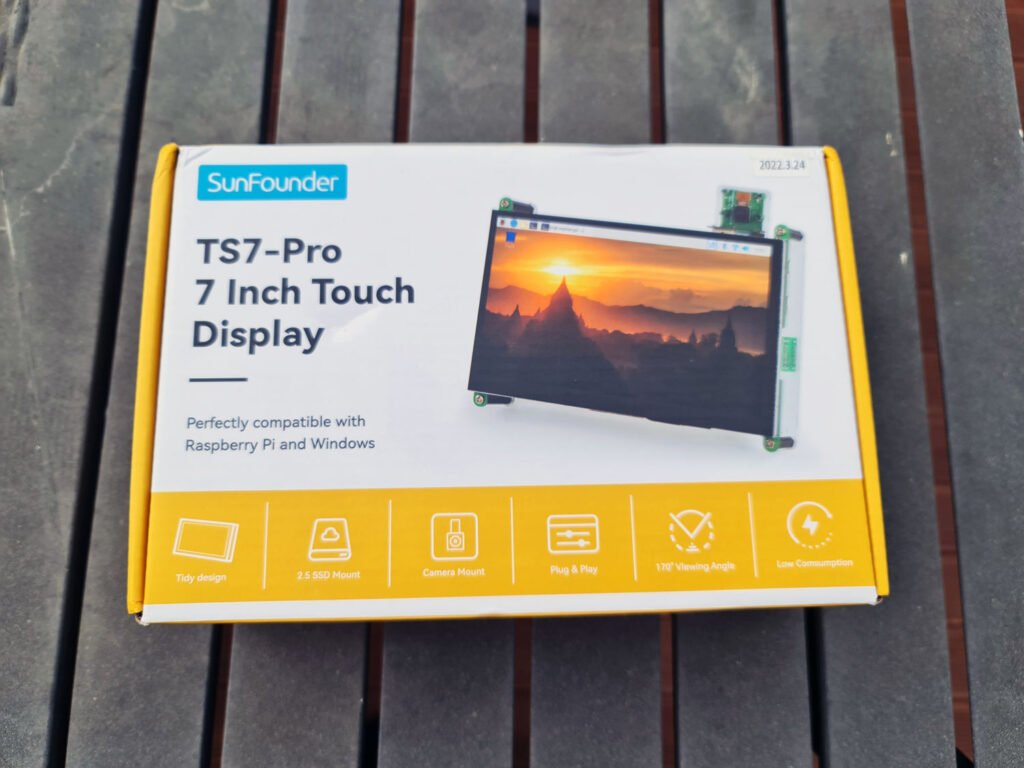
2022-8-10 18:45:39 Author: www.rtl-sdr.com(查看原文) 阅读量:38 收藏
The SunFounder TS7-Pro 7-Inch Touch Display is a portable high resolution 1024x600 7-inch touch screen with space on the back for a Raspberry Pi 4 to be mounted. It is also possible to mount an optional 2.5" SSD and 'PiPower' battery mount. The price of the TS7-Pro is currently reduced to $79.99 on Amazon and $89.99 in their direct store.
Last year in October we reviewed the 'RasPad 3.0' another SunFounder product that is a portable tablet enclosure for the Raspberry Pi 4. The RasPad is a more complete setup offering a full enclosure and built in battery. We reviewed the RasPad as we were curious to see how easy it would be to integrate a RTL-SDR on the inside. With some minor modifications we were able to successfully do this and create a portable RTL-SDR station. The RasPad 3.0 is a more costly device at US$259 on Amazon and $219 on their direct store.
This year SunFounder reached out to us again and asked if we wanted to test their TS7-Pro display, and see if it is possible to integrate an RTL-SDR.
Unboxing and General Assembly
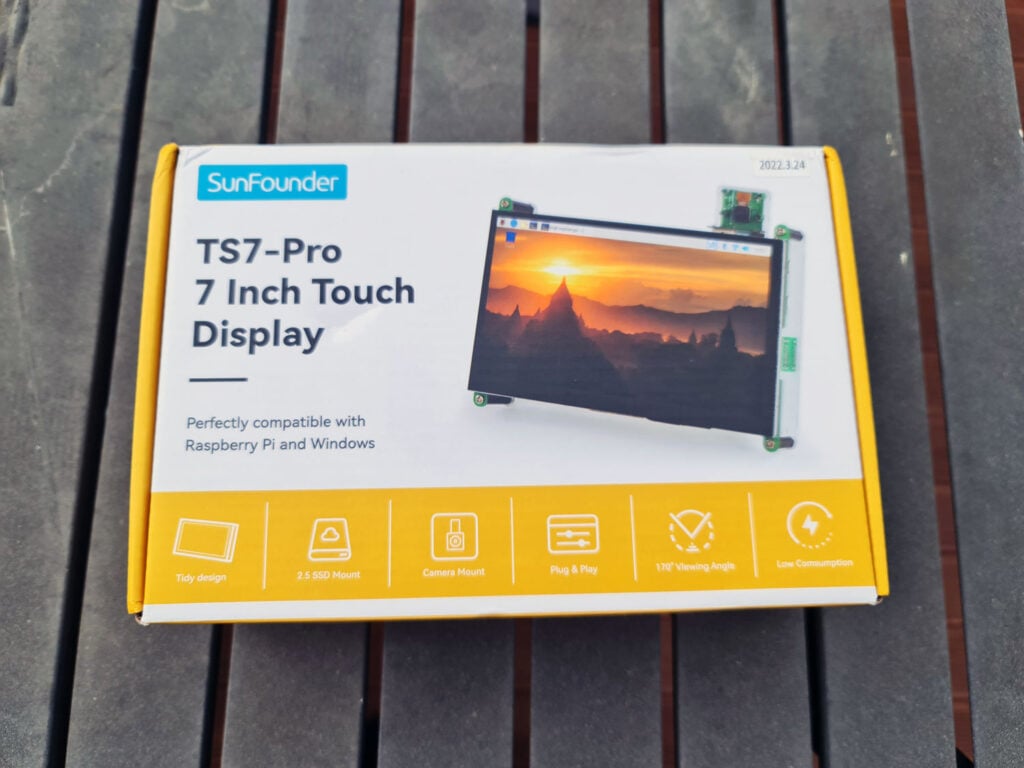
The TS7-Pro comes packed well with foam. Inside is the manual, acrylic cover, 2x HDMI and 2x USB cables, 2x USB-USB bridge adapter (one for the Pi 4 and one for the Pi 3), 2x Micro-HDMI to HDMI bridge (one for the Pi 4 and one for the Pi 3), various M3 screws, a screwdriver and the LCD screen itself. The cables are designed for people who want to use the screen as a suppletory PC screen, so we did not end up using them.
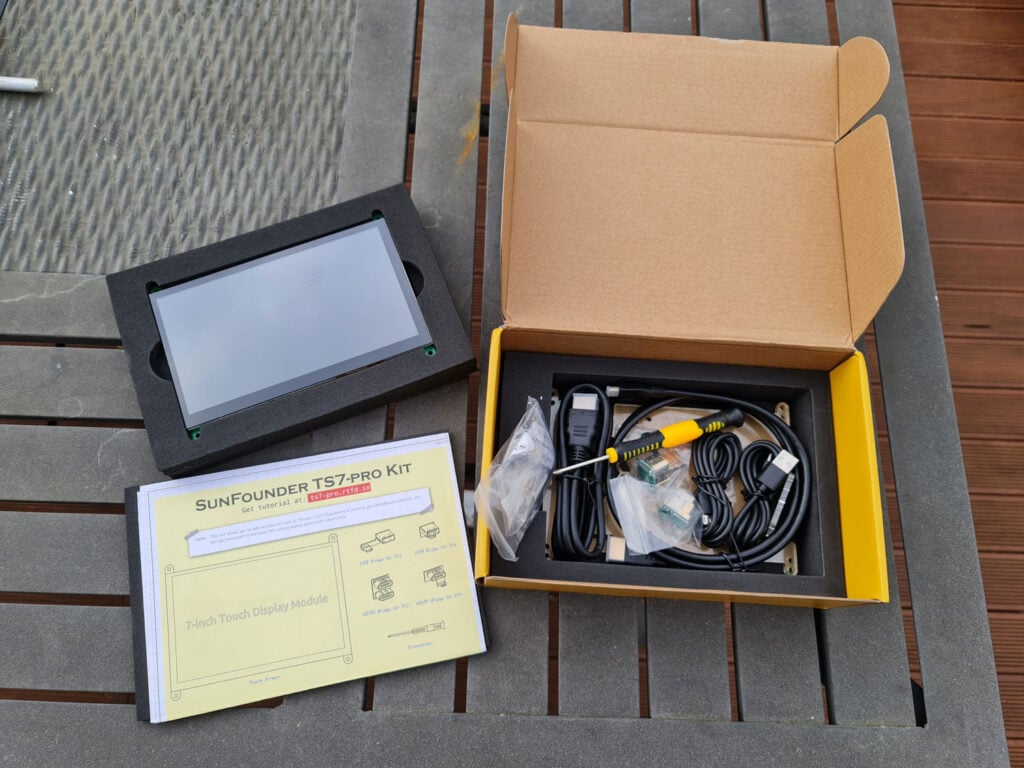
The rear of the LCD screen contains all the LCD driver circuity as well as speaker and mounting points for the Raspberry Pi to connect it's GPIO header. The required HDMI and USB connections between the Raspberry Pi and LCD screen are handled by small bridge connectors.
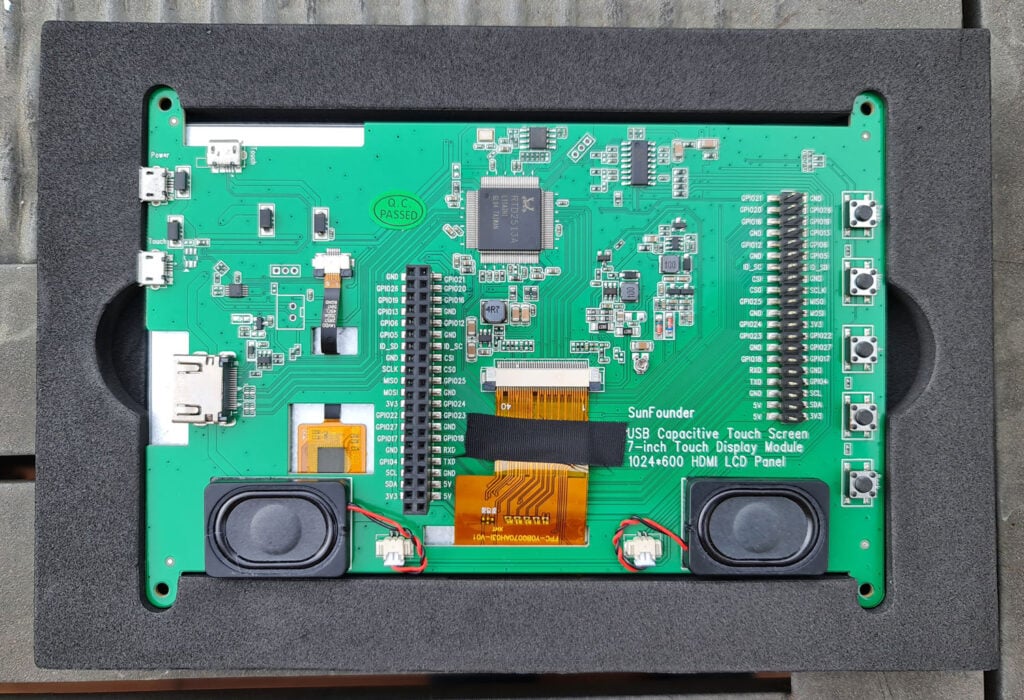
The assembly process is very simple. Just mount the Raspberry Pi on the back, connect up the HDMI and USB bridge adapters, and screw on the acrylic backing plate.
There is also a very useful metal kickstand on the back which allows the screen to sit almost upright for easy viewing when placed on a surface.
RTL-SDR Modifications
The acrylic backing plate is designed to be able to mount a 2.5" SSD and/or a 'PiPower' battery module. Instead of using these accessories we decided to see if we could instead fit an RTL-SDR Blog V3 and our own USB battery pack on the back.
The acrylic plate has several screw and venting holes which we made use of to simply zip tie the RTL-SDR onto the back. We then used a short USB extension cable with a right angle connector between the RTL-SDR and Pi 4. There is plenty of space on the inside between the PCB and acrylic plate, so the RTL-SDR can be hidden away with the antenna port still easily accessible.
The USB battery pack is a bit larger, so fits on the outside of the enclosure also via zip ties.
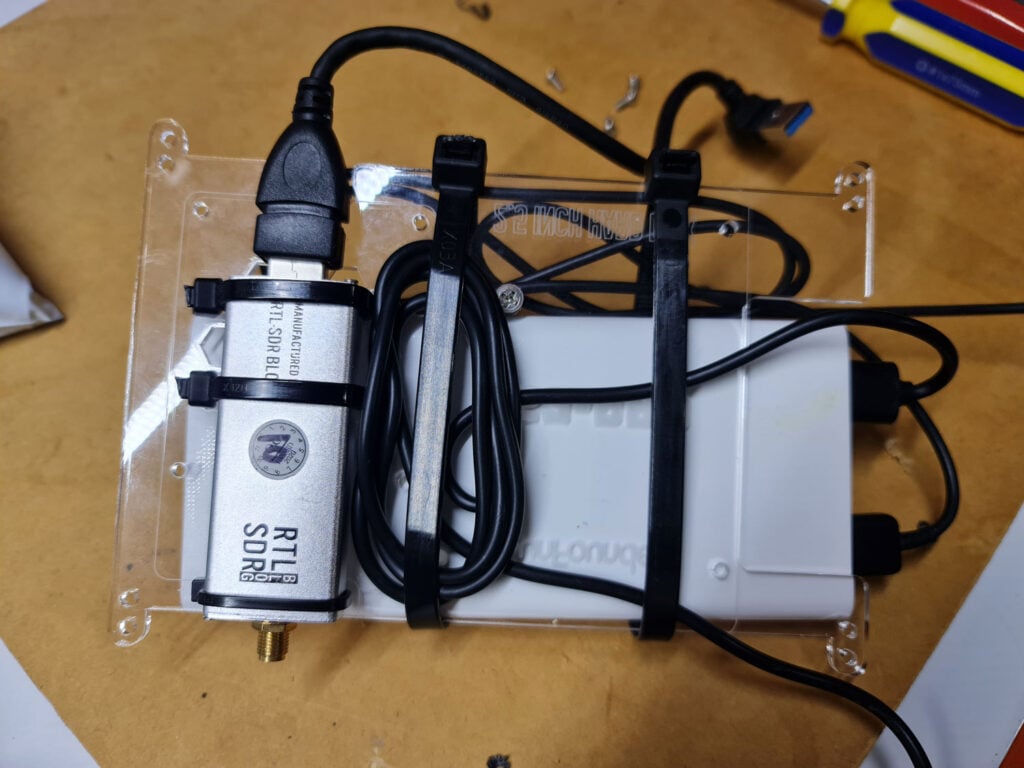
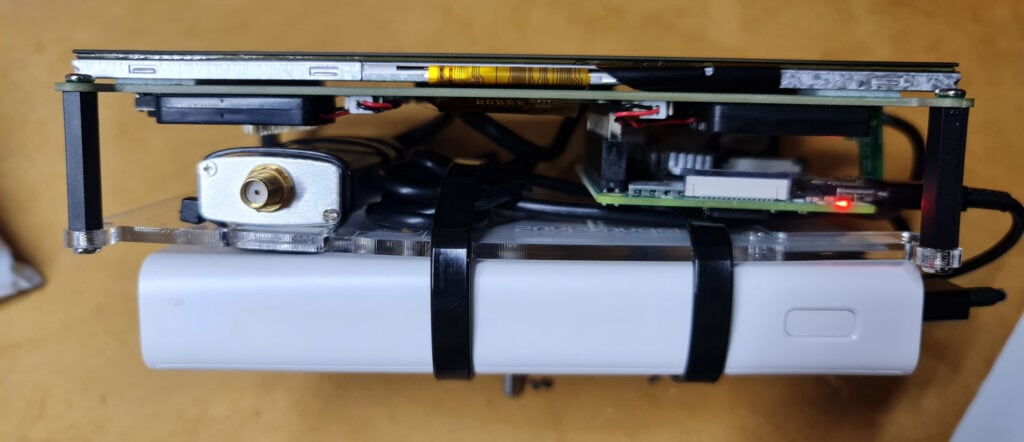
After tightening down the zip ties, and hiding away the excess cabling, the whole construction is stable and not likely to fall apart easily.
Operating and Testing
Both the LCD screen and Pi 4 need to be powered separately. So you will need a battery pack that can support at least two outputs, and one that can support the required power draw of the Raspberry Pi whilst also powering the LCD screen.
We also initially connected a simple whip antenna to the RTL-SDR, but had to change that later as we will discuss.

For software we installed the Pi64 version of DragonOS, which is a ready to use Pi 4 image that has many RTL-SDR compatible programs built into it. A reminder that any software issues we discuss are unrelated to the SunFounder hardware.
The touchscreen works as expected, however we did notice that there is an initial bug on boot where the onscreen keyboard won't work unless you try to log in once with an empty password first. However, as we discovered in the RasPad review, most SDR programs like SDR++ are not very well suited to touch screens, so in the end we ended up connecting a wireless keyboard for ease of use.
Using a keyboard ended up also being a requirement in our tests, because the way we mounted the RTL-SDR meant that the screen was upside down. Using the screen in this 'upside down' orientation was preferred as the kickstand makes it sit a bit more upright and keeps the antenna more vertical. To get around the upside down screen we had to flip the screen in Ubuntu settings. Unfortunately flipping the screen does not also flip the touch screen inputs, so our touch inputs became inversed. There seem to be ways to fix this but we did not look further into the issue.
One other minor annoyance is that we found that the LCD screen would not get recognized by the Pi 4 when the keyboard's USB dongle was connected at boot. This may just be a Pi 4 issue, or an issue with our power pack unable to provide enough current at boot, as we have encountered similar issues in the past with Pi 4's used in other projects. Once the first text appears on the screen, connecting the keyboard USB dongle is possible.
With a keyboard connected, SDR++ opened and ran smoothly, and looks great on the 7 inch screen. We note that we did have to apply a small configuration fix in the Ubuntu sound settings in order to get the built in speakers to work. The fix is the same one used in the RasPad review, so please see that review for more information.
With it's somewhat open back, cooling doesn't seem to be an issue and we never noticed the Pi 4 throttling, or the RTL-SDR overheating.
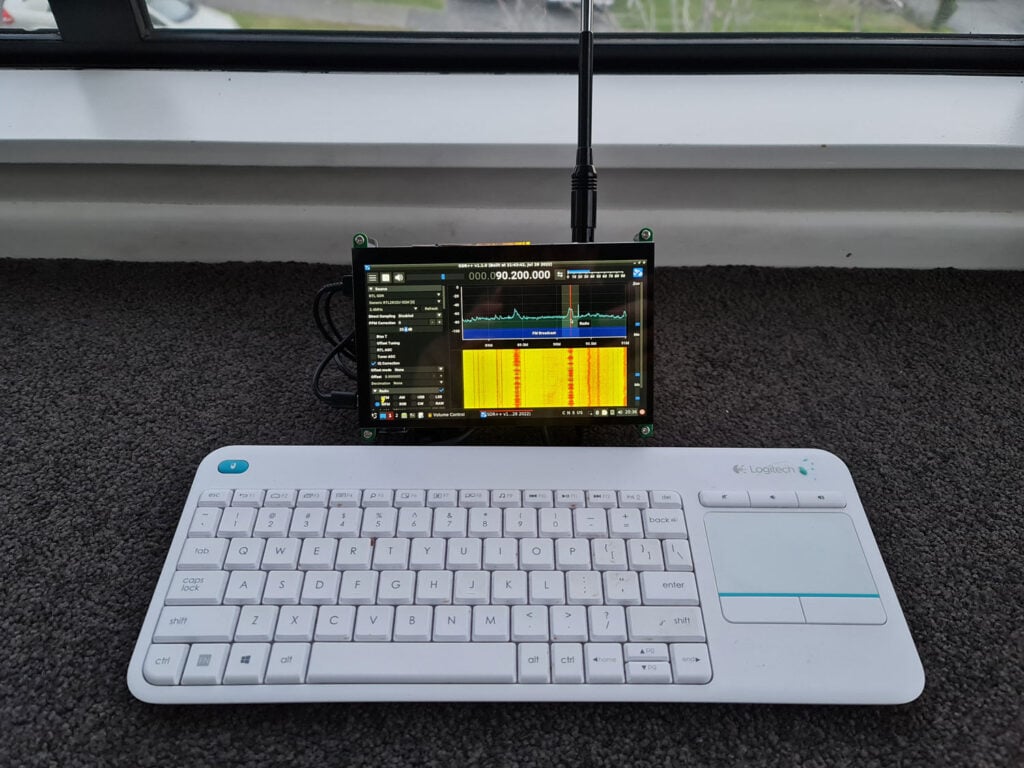
LCD Screen Interference
Again as we noted in the RasPad review, LCD screens are known to be big sources of RF interference and having the dongle and antenna this close to the screen electronics is not ideal. The image below shows what interference from the LCD screen looks like on the spectrum. Interference on the TS7 screen appears to be more pronounced when compared to the RasPad, possibly due to a different driver PCB with more exposed ribbon cables.
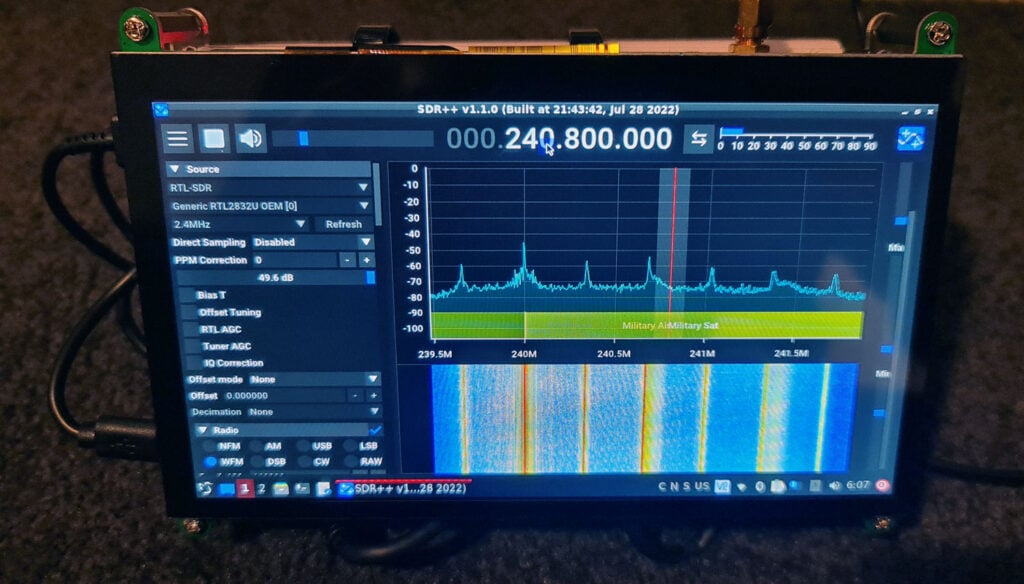
This interference is not present on all bands, and once an external antenna is used with a few meters of coax distance away from the LCD the problem reduces, but it doesn't go away fully. With an antenna disconnected there is almost no interference seen at full gain, so most of the interference appears to come through the coax cable and antenna. So we recommend using high quality shielded coax, as well as getting the antenna away from the LCD screen too.
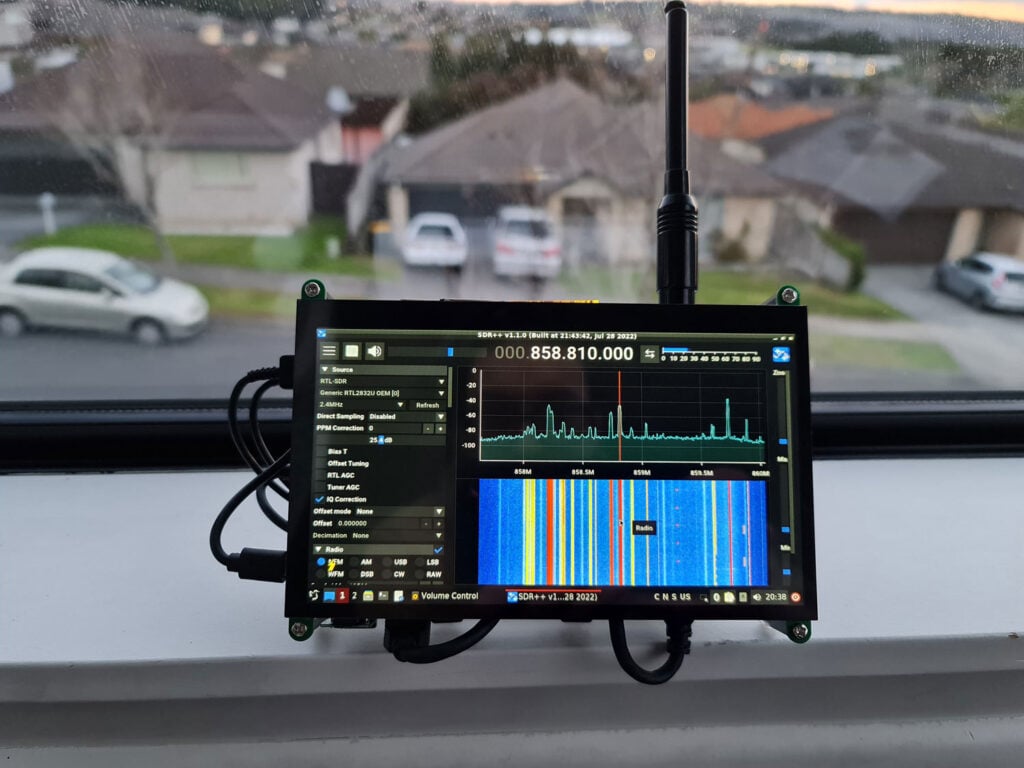
Conclusion
The SunFounder TS7 Pro is a nice and low cost product that allows you to easily connect a Raspberry Pi 4 to a touchscreen. Unlike the RasPad it does not come with a battery or enclosure, but this allows for a smaller form factor. The LCD screen itself is high quality, bright and with good viewing angles.
Hacking an RTL-SDR and battery pack onto the back of the SunFounder TS7 LCD display is easily possible and does result in a very nice portable form factor. However, there are still wires hanging out the sides which make it a little less neat to carry around and store away, although all the connections seem secure. Mounting the assembly into a 3D printed enclosure could help neaten things up.
LCD interference remains an issue, but by using an external antenna with a few meters of good quality shielded coax the problem can be managed.
Overall we think the product is an excellent starting point for any RTL-SDR Pi 4 project that requires a screen.
Disclaimer: We do not receive any compensation for this review apart from a free TS7 Pro.
如有侵权请联系:admin#unsafe.sh